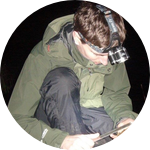Morse toad
It has been a while since we last posted a project update, mainly due to other commitments taking priority. This has not been helped by the weird spring and summer we had, which was not productive ...
Mistletoad and Wine
First off, Merry Christmas and a Hoppy New Year to everyone who has been following the project. I thought I'd give you a quick Christmas update before we enter 2022, when we hope to finally wrap th...
The Dark Side of the Toad
Things don't always go the way you'd like when it comes to science. We were hoping to have most (if not all) of the samples collected from the remaining midwife toad populations by now. However, Mo...
Time to hit the toad!
Somehow we've found ourselves in 2021 and we are still working on the project. The COVID-19 pandemic has really thrown a spanner in the works for a number of reasons such as the closure of the lab ...
Toads end up calling, in the warm August rain
It's been an exciting week for us. Since our last update, most of the country has experienced some heavy downpours. Whilst this rain has caused havoc and localised flooding in some areas, it has al...
On the toad again
It's been a while since our last update and a lot has changed in the world since April. Unfortunately a lot of this is outside of our control, however the changing conditions have allowed us to get...
You Can't Kill Frog and Roll
It's been a while since I last posted an update, it's been slow given the recent pandemic of coronavirus but progress is being made behind the scenes. First of all, you will notice that there is a ...
The Sound of Science
Hey everyone! Apologies for the silence over the past few months - it has been a busy one fraught with danger around every corner. I may be exaggerating a little but we have had our ups and downs. ...
Go with the Toad
It's been about a month and a half since the project was successfully funded and although we aimed to have them in the lab sooner, all of our samples are now in one place and ready to go! Thanks ag...




